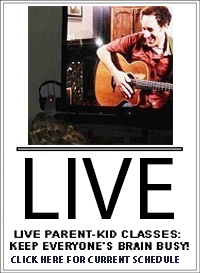A maqam is an Arabic classical musical construction (generally analogous to the Turkish makam) in which a set of notes has developed particular relationships with one another based upon history, habit and an intuitive sense of melody. Rather than having a specific pattern of steps between notes like a “scale” in Western music, a maqam is more like a “mode,” in that each maqam elicits a different mood by focusing on the way particular notes sound when played together. For a basic introduction to “maqamat” (the plural of maqam), as well as an explanation of the difference between a maqam and a scale, visit MaqamWorld.com–an extraordinary resource that provides samples to allow you to hear almost every maqam.
To add another layer of intrigue (or even more labyrinthine complexity, depending on how you see it), rhythms in Arabic music rarely correspond to the most traditional Western 4/4 meter. MaqamWorld’s rhythms pages lists many of the most prevalent rhythms in Arabic music, of course with examples. One widely used and very familiar rhythm, called “maqsum,” does have a time signature of “4/4” (look at the “Everything is a Drum” rhythm overview for an explanation). To get the feel of maqsum, we’re going to use a notation common in Arabic music that’s based on the sound made by a doumbek, a drum often used in Arabic music (as described above). You say “dum” when you hit the drum with your right hand and make a very clear, low tone. You say “tek” when you hit the drum with your right hand but make a sharp, high tone.
What follows below may look complicated, but DON’T BE INTIMIDATED! If you go slowly step by step through it you’ll definitely get it.
We’ll start by counting out one measure of 4:
“1 & 2 & 3 & 4 &”
If we use “D” for “dum” and “T” for tek,
“dum tek dum tek dum tek dum tek” corresponds to the notation:
D-T-D-T-D-T-D-T-
If you want to hear what this sounds like go to Jas’s MIDI Hand Drum Generator, paste “D-T-D-T-D-T-D-T-” into the text box and click “play.” (Many thanks to Jas, for creating this generator. It’s another essential site.)
The basic maqsum has rests–pauses–between some of its dums and some of its teks. We’ll indicate a pause by putting an underscore “_” so we can see the rests. With all that said, this is the most fundamental maqam, called the “maqsum”:
1 & 2 & 3 & 4 &
D T _ T D _ T _
Count it out slowly and you’ll pick it up. Look at the maqsum introduction on a drummer’s blog called “the troupe” for a straightforward explanation.
Want to hear the basic maqsum? Go to Jas’s maqsum generator and hit “play.”
“Maqsum” is technically one of the rhythms in “the baladi family.” Baladi is a very common rhythm used in Middle Eastern belly dancing. It’s similar to the maqsum, but starts with two “dums”:
1 & 2 & 3 & 4 &
D D _T D _ T _
To hear it, go to Jas’s baladi generator and hit “play.”
In class we’re going to learn the basic “maqsum” (while listening to Gamalat” by Maqsum Variation from “Beat Bazaar”) and also “baladi,” which Jas describes as “a more folksy version” of the maqsum. We’re then going to belly dance out the difference between the two, much like these blurry ladies on YouTube. The group with the woman in the blue shirt in front are dancing to the baladi rhythm (listen to Jas’s version here. It’s the baladi pattern from above with a few more doumbek tones to fill in the rests.) I don’t know enough to confirm that the other rhythm is a maqsum, but in class we’re going to go between beledi and maqsum and back again.
Want to learn more about Middle Eastern rhythms? Two of the best resources online are Jas’s Middle Eastern Rhythm’s Faq and, as mentioned above, Maqamworld.com. You can explore many rhythms through MaqamWorld’s rhythm page, which links to samples from the simplest maqsum to more intricate rhythms like the 22/4 Hajaz and the 19/4 Awfar. You’ll especially have a lot of fun on Jas’s page listening to all the different rhythms with the generator.





Comments are closed.